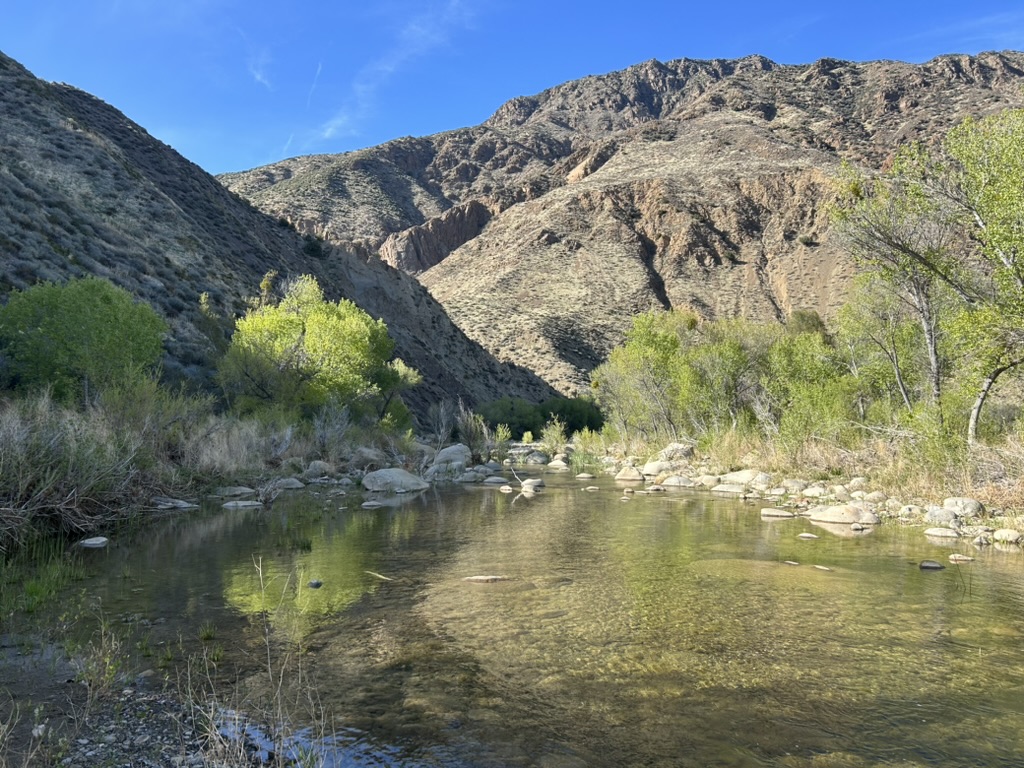
The Sespe River Trail had been on my bucket list for years, but somehow I had never gotten to it. It’s only 2 hours from LA and an even shorter drive from Ventura, but it just never quite made it to the top of the list. There were always bigger, badder peaks and parks to attend to, and for how dense California is in natural splendor, it’s no surprise that this area would get skipped by someone passing through and hitting the highlights. If you have one chance to visit California, don’t come here. Go to Yosemite, or King’s Canyon, or even Joshua Tree. But if you’re looking for something a little off the beaten path, the Sespe has so much to offer.
Sespe River Valley stands as one of Southern California’s last truly wild watersheds. This pristine wilderness area, part of the Los Padres National Forest, offers visitors a rare glimpse into what the region looked like before modern development. The Sespe River flows freely for nearly 32 miles without a single dam, carving a spectacular canyon through the Topatopa Mountains. Its crystal-clear waters support a diverse ecosystem of native plants and wildlife, including the endangered California condor and the rare southern steelhead trout. The valley’s isolation has allowed it to maintain its natural character, with dramatic sandstone cliffs, natural hot springs, and lush riparian habitats creating a landscape of extraordinary beauty. At times it felt like I was hiking through the drier areas of Hawaii.
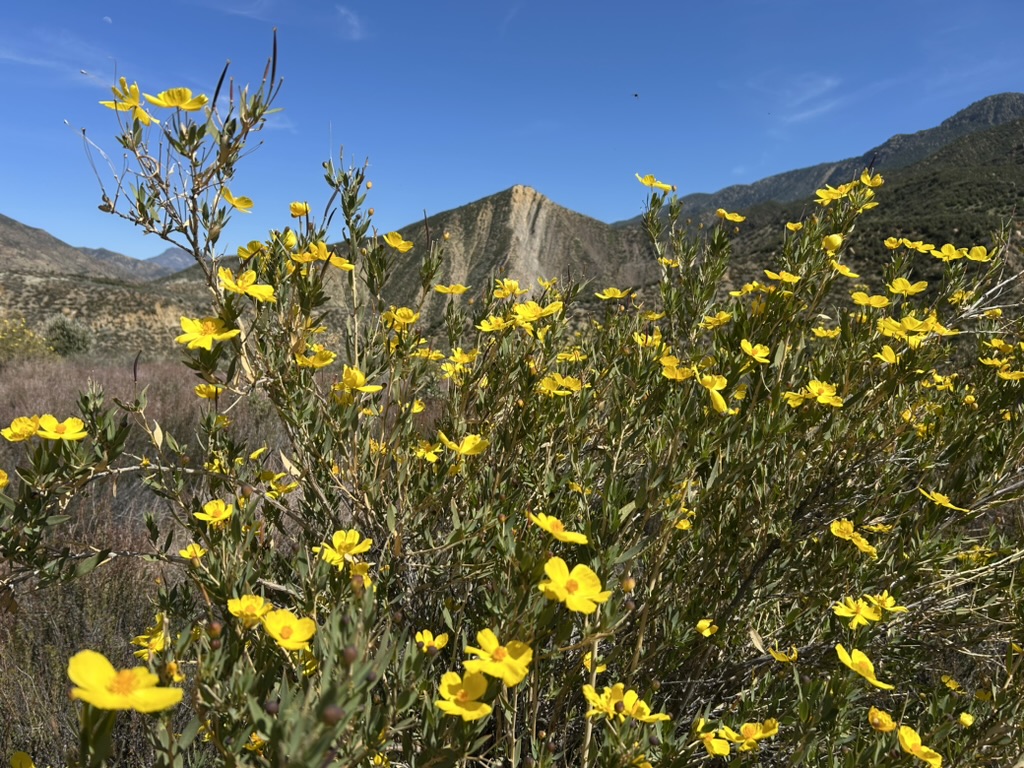
The Trail
Sespe River Trail to Willet Hot Springs on Alltrails
Beginning near Ojai in the Los Padres National Forest, this magnificent trail follows the free-flowing Sespe Creek as it winds through a remote canyon landscape that feels worlds away from the nearby urban centers.
The 10 mile journey (one-way) takes hikers through diverse ecosystems, from chaparral-covered hillsides to shaded riparian zones, with the crystal-clear Sespe Creek as a constant companion. As the trail meanders alongside the creek, it reveals dramatic sandstone formations, seasonal wildflower displays, and glimpses of wildlife including deer, eagles, and if you’re very lucky, the endangered California condor. If you continue on for a roughly additional five miles, you’ll make it to Sespe Hot Springs. We didn’t go to Sespe Hot Springs, but we heard that it takes roughly the same amount of time to cover the additional five miles as the first section due to how poorly maintained the last section of trail is.
The ultimate reward awaits at trail’s end: Willet Hot Springs, a natural thermal pool nestled in a secluded side canyon. Here you can soak in the approximately 100-degree mineral waters (it felt much hotter!) while taking in views of the surrounding wilderness. As long as you’re okay with smelling potent rotten eggs (I’ve been to many hot springs, and this may have been the worst), it really is a lovely spot.
A note on timing — for much of the year, this trail is un-hikeable. Depending on your heat tolerance, from June to October it can get biblically hot in the middle of the day, and in autumn and winter there’s a good chance that the river can dry up during a dry season. But also in late winter and early spring, if there’s too much rain the water crossings can be impassable or dangerous. You’ll want to hit this in the spring after there’s been some rain in the season, but not too much rain!
You don’t need a permit to camp on this trail (which is super rare in California), but try to stick to the already established campsites. You do need a National Forests Adventure Pass or an America The Beautiful Park Pass to park at the trailhead.
Trip Report
The day started early (6 AM) biking the 7 miles from my house to Santa Monica so I could carpool with my hiking friends, Chloe and Kevin. Luckily, the bike muscles are a bit different from the hiking ones. A bit outside Ojai we passed the mysterious outdoor gun range (the only one I’ve seen in California), and then took the narrow (but paved!) road down to the Piedra Blanca trailhead, the start of the trail. Appropriately named, at the parking lot there’s a massive white rock formation that towers across the valley. We were on the trail by 10 AM. Chloe, our trusted timekeeper, started her watch and we were off to the races.
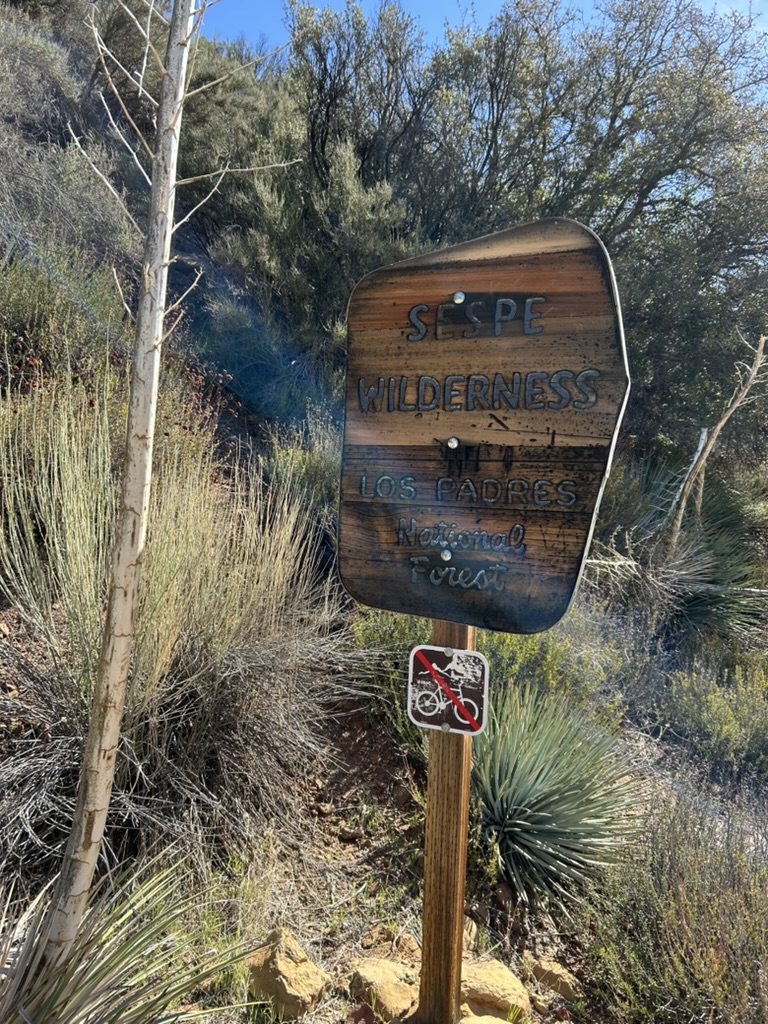
This is a trail that, at least in the beginning portions, allows you to really cruise. There are no steps or particularly steep areas, and the trail simply rolls up and down through the river valley with some sections that are flat as a pancake. We ticked off the first mile in 20 minutes and the next mile 19 minutes later. The trail criss-crosses the river several times, but between it being later in the season (early April) and only a moderate amount of rain this past winter, most areas could easily be rock hopped. I recommend carrying some lightweight Crocs or sandals just in case you have to get in the river.
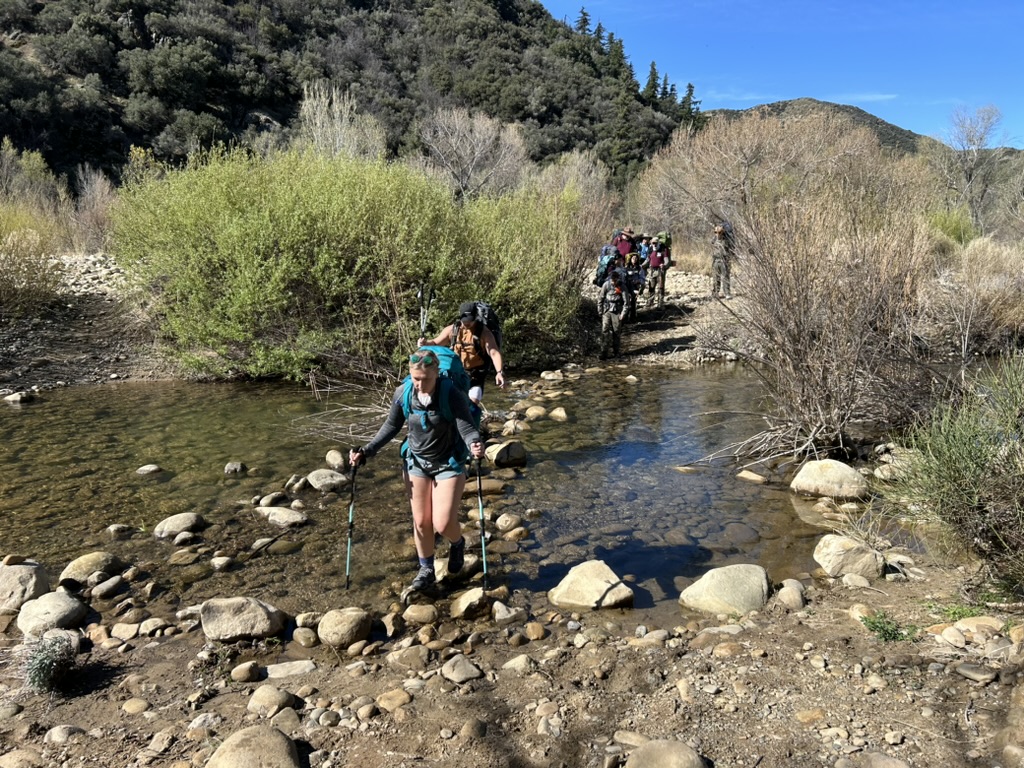
At mile 4 we hit Bear Creek, the first official campsite. It’s a lovely spot right on the river with several established areas to set up your tent, but we wanted to push on to get closer to the spring (plus, it’s a little crowded since many groups stop here). After crossing Bear Creek (probably the hardest crossing and most people get in the river for this one), we continued on, choosing to camp around mile 6 up on a plateau overlooking the valley. Since the trail is one-way and we were only camping for one night, we chose to camp before the halfway point so that we could cover most of the miles with just a daypack to the spring and back. At this point it also got very hot; there’s almost no shade on the trail so the valley cooks. Chloe and Kevin’s cheese they had brought for dinner melted.
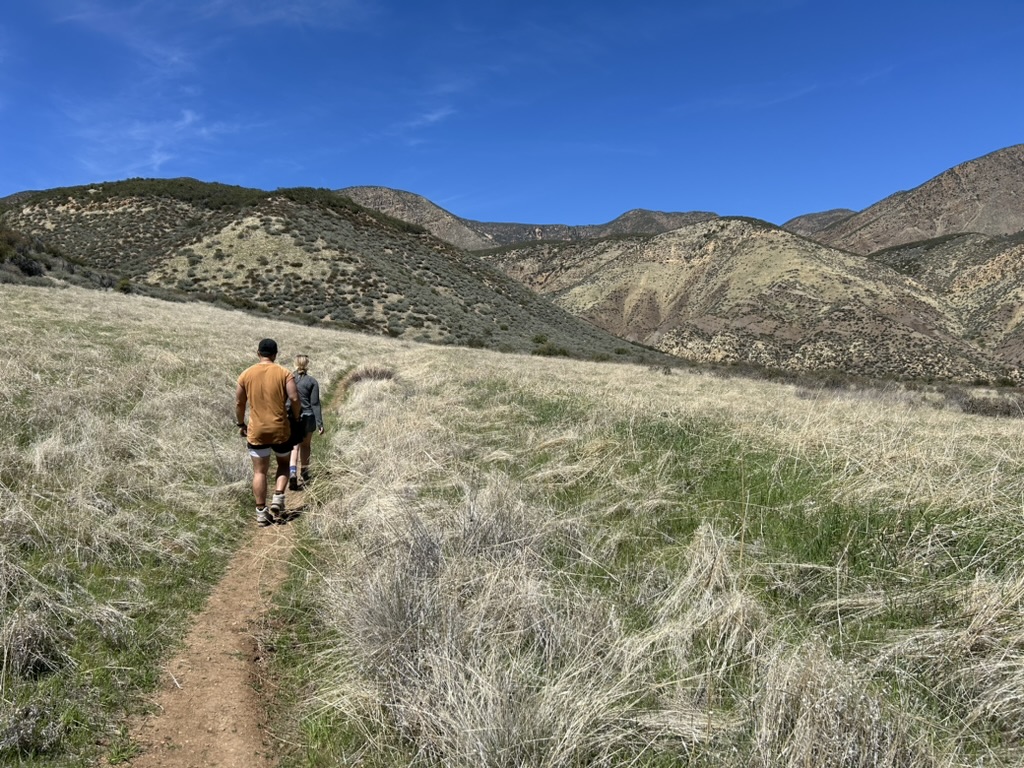
After setting up our tents and eating lunch (I dried out mystery meat in my dehydrator for the crew), we continued on in the blazing heat of the afternoon. To think that the ocean and coastline, shrouded in cold fog, was only twenty miles away was a funny thought. Microclimates. We passed the Oak Flat campsite at around mile 7, probably the nicest established campsite, since it’s also right on the river but has fewer people since it’s further in from Bear Creek. At around mile 9.5 you get to a fork — to the left is a spur up to Willet Hot Spring for the last half mile, and to the right the Sespe River Trail continues onwards.
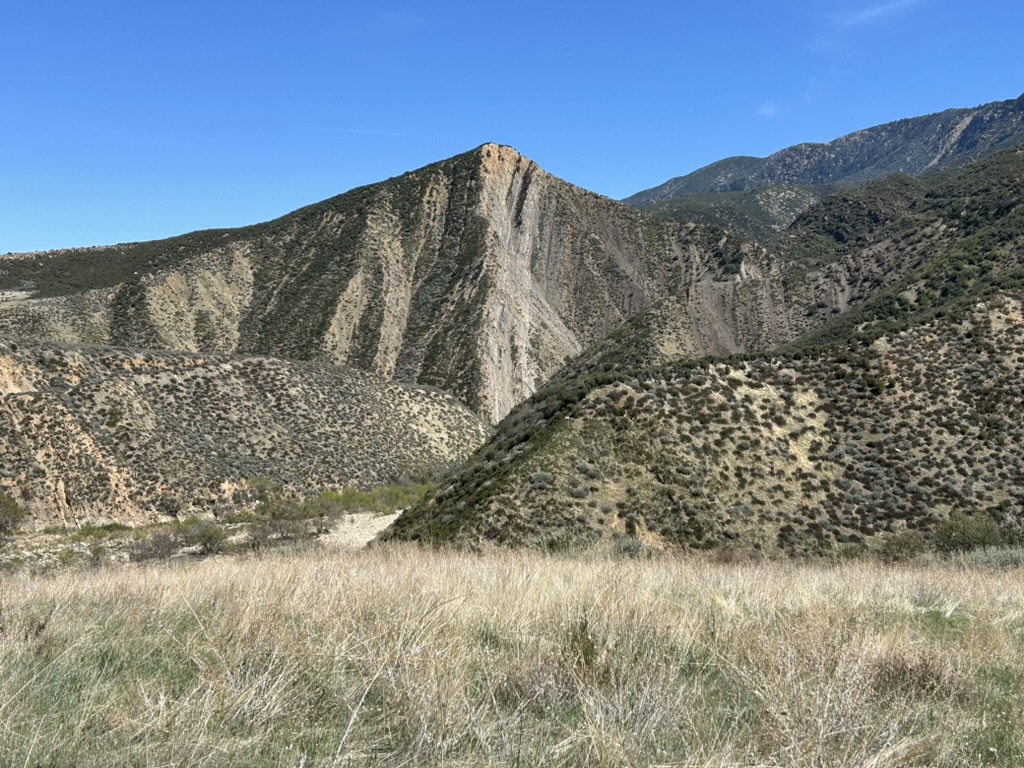
Since it was still hot and the thought of bathing in a hot spring was appalling, we took the opportunity to jump in the river. The pools in the middle were 3-4 feet deep, so you could definitely get fully in. The river was probably about 50 degrees — not numbingly cold, but cold enough to need a countdown before entering. The water was crystal clear and you could see all the way down to the bottom (no steelhead trout sighted though). After that it was just starting to cool down and we were ready for the spring.
The spur up the side canyon to the spring is nothing like the river trail — it’s steep and right on the edge of the canyon, so you have to be a little careful getting up there. For those with wild ideas, I would not attempt this in the dark or after a beer. But it’s only a short way, and when you start to smell the horribly sulfurous spring you know you’re near. There also seems to be regular stream water in the side canyon because once you near the spring there’s all sorts of green vegetation that contrasts sharply with the desert scrub surroundings.
You’ll reach a dead end in the canyon and from there, you climb up twenty or so feet up the trickling stream to get to the spring. The spring is a joy. Someone built a huge metal bathtub and the hot water gets piped directly into the tub. There’s also a water filter that keeps it quite clean, except for the algae on the bottom which makes the tub slick. I would guess the water was somewhere between 102 and 105 degrees; it was uncomfortably hot, and I could only sit in the tub for a few minutes before I had to get back out. Supposedly, there used to a be a second pipe with cold water so you could regulate the temperature of the tub, but that was no more. There was only one other person there — a man from Merced, a town in the Central Valley. I asked him what it was like living there and he said, “You move to Merced… when you want to give up on your dreams.”
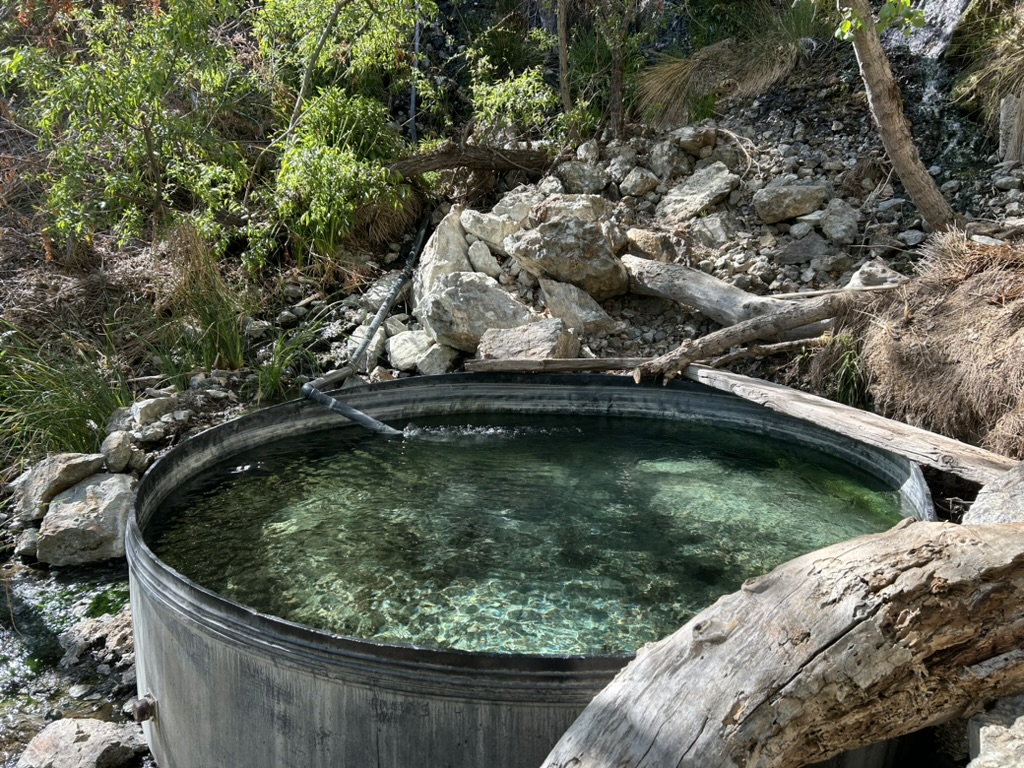
I don’t dabble much in the spiritual side of things, but the place did have a vortex-like feel to it. Between the heat, the eggy gas, the wind through the trees in this oasis — it seemed like time was just sucked away while we were staying there. Before we knew it an hour had gone by and we still had to make it the four miles back to camp before dark. We changed quickly and then set off on a brisk pace back to camp, the temperature now cooler. We made it back around 7, cooked our dinners (ramen and Annie’s Mac and Cheese) over the stove, hung out for a bit looking at the stars (very few because of the quarter moon), and then turned in.
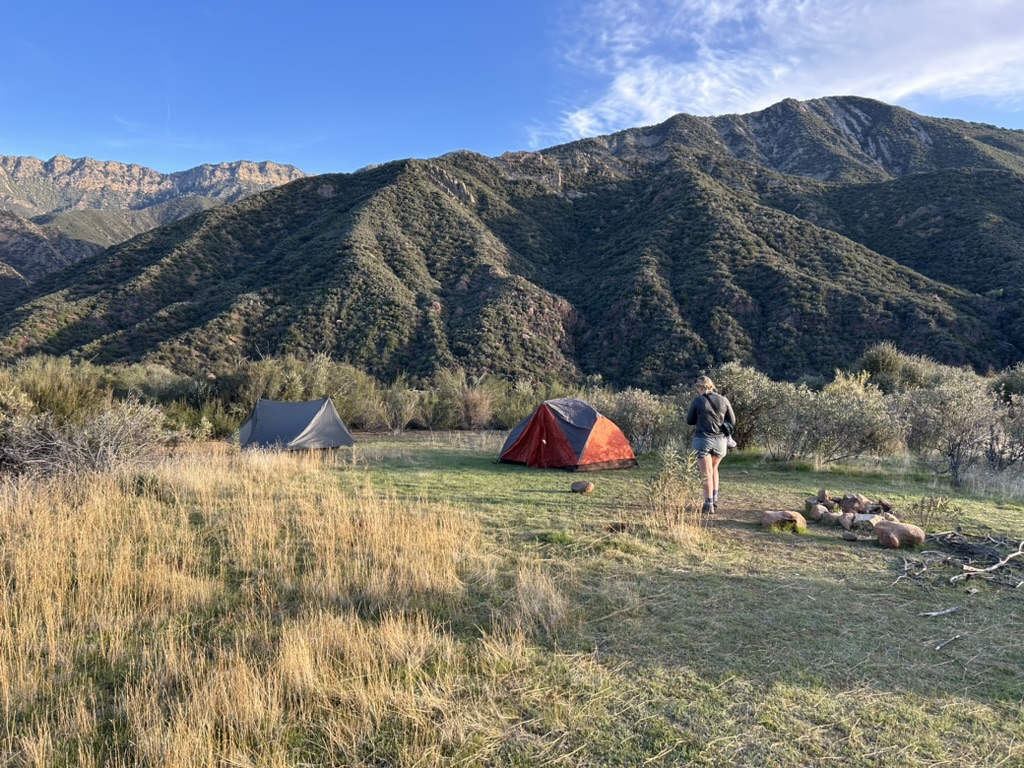
The days are hot, the nights are cold. The night started pleasant enough but around midnight the temperature really dropped. I was using my Gossamer Gear 2 person tent, which is lighter than my other tents but has more volume so it didn’t heat as well from my body heat. I put on my flannel, hat, and down jacket and fitfully slept until daybreak.
The hike out was uneventful and we made it back to the car around 11 AM, just over twenty four hours from when we started. Overall, if you’re looking for a backcountry experience in southern California where you don’t need to worry about permits, you should definitely check this one out. And some day I’ll be back to make it all the way to Sespe Hot Spring!